From Kafue National Park our next destination was Kaoma where we would visit an orphanage. We didn’t know however, that on that particular day it was Zambians Independence Day (from the British, as usual). As in every country, people go into town to drink, dance and ignore as much rules as they can! Luckily though, Africans are really careful around cars (probably for a good reason) so most of the time they were already out of our way when we passed. Cows and goats should learn something from that. Even though we were a little bit delayed, it was a lot of fun to see how the Zambians party!
We arrived at the Cheshire Orphanage Guesthouse around dark (which is around 18.30). The profits of this guesthouse are invested in the orphanage, a good way to spend your money! For the first time in a long time we slept in an actual bed, but I can tell you that I missed the rooftop tent. This had little to do with the awesomeness of our rooftop tent and more with the quality of the bed (it felt like sleeping in a bathtub, Kellie and me rolling towards each other all night, nice and cosy).
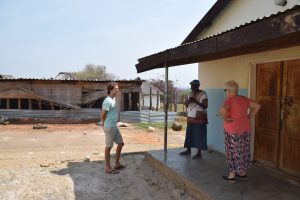
The wonderful ladies running this orphanage, explaining us how everything works here.
The next morning we would become very inspired. We were guided to the orphanage where we met with Sister Mary, an Irish immigrant. This wonderful lady left Ireland about 39 years ago to set up the Cheshire Orphanage and provide orphaned children with a family. 39 years!! I think most people reading this, weren’t even close to being born (as Mary emphasized when we asked her when she came here!). Most of the children had lost their parents because of an HIV/AIDS epidemic or other diseases. Mary told us that there used to be no orphans in Zambia because everyone is family. However, after an epidemic, not all orphaned children can be adopted by their closest relatives. One family has always at least two children and most of the time more. As relatives are preoccupied with sustaining their own children, a whole new family is too much. This makes an orphanage, like the Cheshire Orphanage, a crucial facility in any region of Zambia or Africa.
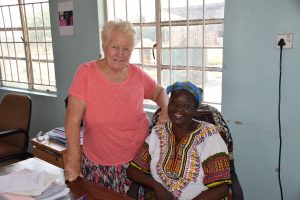
Sister Mary (from Ireland) and Ruth (from Zambia). They have invested their lives in helping these children.
The original strategy of the orphanage was to take in the babies, who couldn’t take care of themselves, and provide for them until they are old enough to walk around on their own. Then they would be able to go back to their family, because family is the most important thing in Zambia. However, their family would not return to adopt the orphans. They spent a lot of time finding the families of as many orphans as possible. However, some children remained with them and now regard the orphanage as their home. After this story, we weren’t that surprised when Mary told us that the Orphanage, that at times provided a home for up to 60 babies, isn’t taking in anymore children. The reason, as almost always, seems to be the lack of funds. Ruth, the woman who has taken over charge from sister Mary, and has worked there for over 25 years, she told us that right now they only have about 40% of the income they need. Here’s what they need it for: The 23 children that live there, are currently at an age where they go to school/college and as any parent hopes to provide for its children, the Orphanage pays their tuition in full. Eight of the children go to college to learn traits such as nursing, mechanics, environmental engineering or school teacher, the remaining children go to a primary or secondary school.
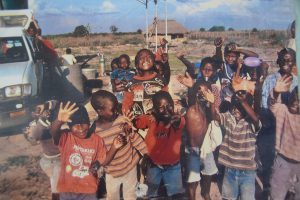
A very happy picture of the children from the orphanage. As we were not allowed to take pictures due to privacy reasons, they gave us this picture!
The tuition costs in Zambia are very high. Primary school is basically only payment of the uniforms, books, etc. However, for secondary school you pay about €300 a year tuition fee and for college around €1000 a year. And this does not include costs for books, clothes, food or extras. What it means is that if you want highly educated children in Zambia, parents have to pay a fortune. Especially if you have a lot of children, like most have. The orphanage funds it all though. They have chosen for a strategy that sustains the children until they can provide in their own livelihood.
Another big part of the orphanage is the farm. It is the vision of the orphanage to be fully self-sufficient. This is their aim, so they won’t have to depend on the irregularity of funds, because it can put the education of the children at risk. As a result, the orphanage started the Farm Development Project. By making nshima (corn meal or pap), peanut butter, farming Moringa trees and potatoes, and having chickens, pigs and ducks, the farm contributes as much as possible to the funds for the orphanage. In addition, this project learns the kids to be self-sufficient.
Do you want to know more about this project? Contact us, or visit the website; click here.
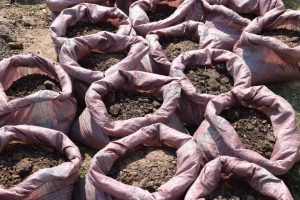
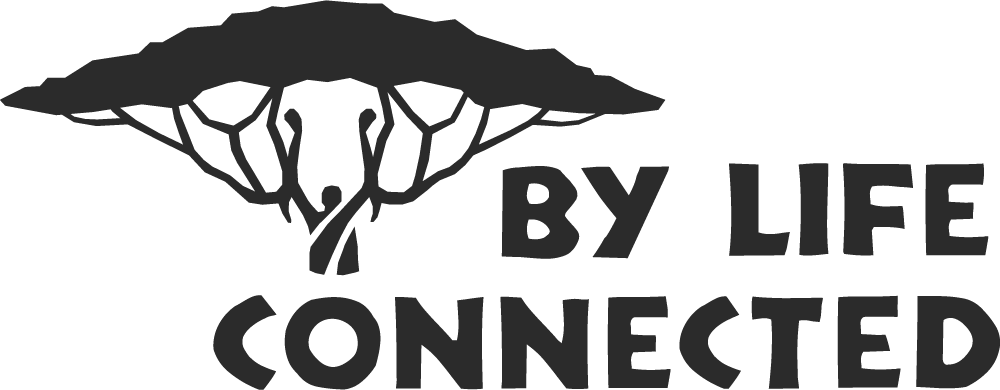




Saving the children, thats a great project.
Great people! Did you asked Mary where’s she from? Interesting to see that individuals can leave their roots behind, for what they belief in.
I love your motives you two have, you are so inspiring. Having a hundred of people of your caliber the can be the beautiful place again. I more than the word ready to join you. I miss you! God bless you!
I love the motives you two have, you are so inspiring. Having a hundred of people of your caliber, the world can be the beautiful place again. I am more than the ready to join you. I miss you! May God bless you!
Thanks for all the response! We love reading it. Thank you Onny, I’m sure we will meet again.
At Hendri, we asked, but I can’t remember the exact name. It was a small village on the West coast.